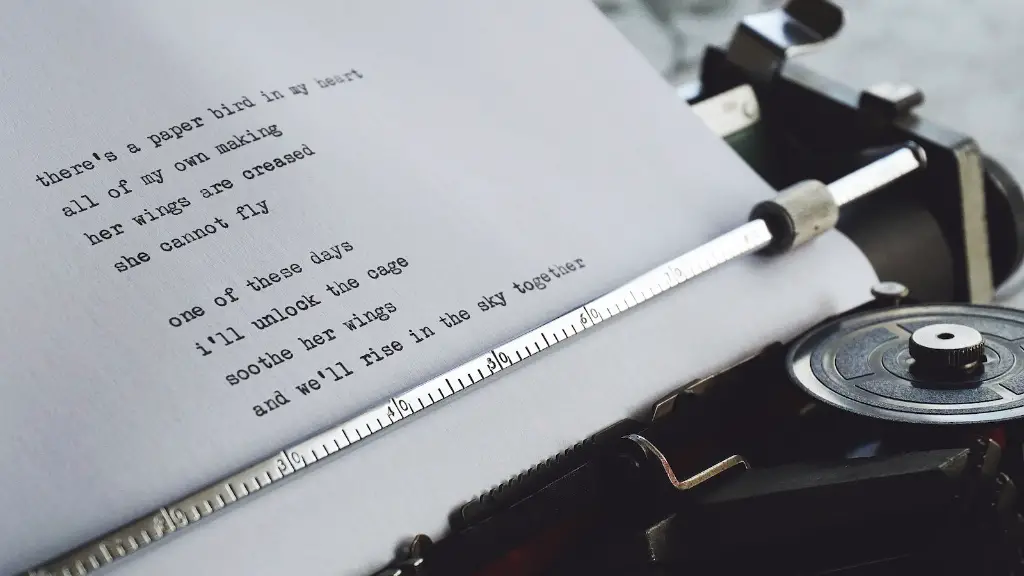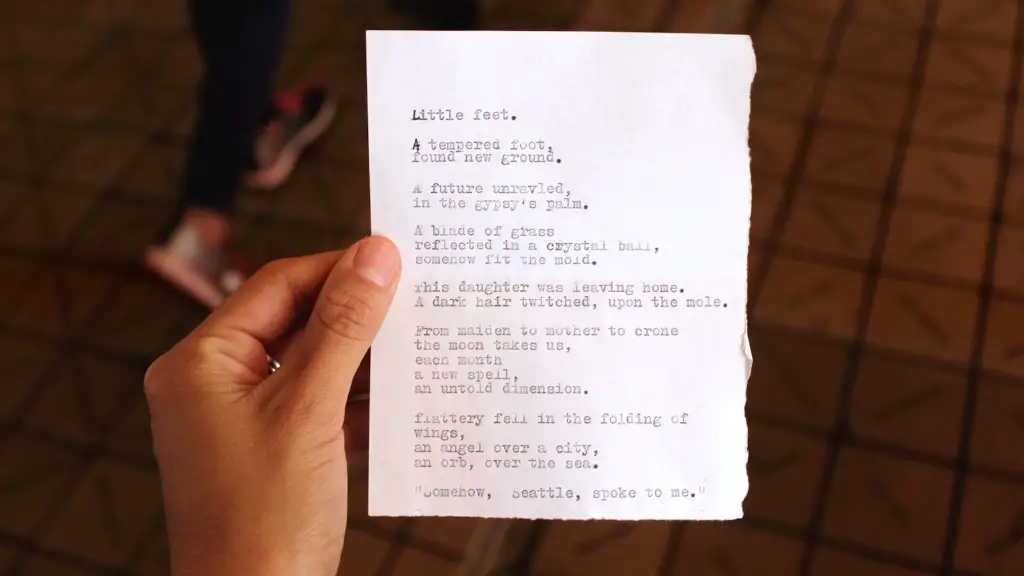Allusions are a powerful tool used by poets to enliven their works and make them more interesting to read. Allusions can add depth and complexity to a poem, indicate themes, and create an immediate connection to a reader’s existing cultural knowledge. An allusion is a reference, typically indirect and brief, to something from the past (or beyond literary works). It can be a reference to a historical event, a person, a place, a work of art, or any other type of information.
A key purpose of allusions in poetry is to enrich the poem. By making references that readers may or may not recognize, poets can add nuance and complexity to their works and make them stand out to their audience. Allusions can also add humor to a poem; readers may draw a connection between the allusion and its source, thus adding an element of surprise.
Poets may also use allusions to bring a poem to life and make it more tangible. By referencing a real-life person, event, or object, the poet can create a vivid mental image for the reader. This helps the reader to enter into the poem and become engrossed in the work.
In addition to adding richness and depth to a poem, allusions can also be used to convey a single, powerful message. By referencing a widely-known figure or event, the poet can make a powerful statement in just a few words. Allusions can also be used to comment on contemporary issues, as well as those of the past.
Furthermore, allusions can be used to evoke emotional responses and to express ideas that might be difficult to say in words. By alluding to a certain memory or experience, the poet can bring out strong emotions in the reader. This is especially common in lyrical poetry, where allusions can be used to portray intense feelings.
Finally, allusions can add a sense of timelessness to a poem. By referencing events, literature, and art from times past, the poet can demonstrate that the same ideas have been relevant throughout history. This helps to create a timeless, universal appeal of the poem.
Exploring the Role of Allusion in Modern Poetry
As the art of poetry evolves, so does the use of allusion. Today’s poets frequently employ allusions to connect their works to the cultural and political climate of their times. Oftentimes, allusions can serve as a commentary on current events and social issues.
Additionally, modern poets often use allusions to create a sense of universality in their work. By referencing events, people, and works from both the past and the present, they can demonstrate that the same ideas have remained relevant throughout the ages. This makes the poet’s work more relatable to today’s audience.
In addition, modern poets are apt to employ allusions to contemporary music, literature, and visual media. This allows them to make connections between their works and those of other artists, and also to make their works more appealing to a younger, more modern audience.
Allusion in Poetry by Significant Poets
Many of the world’s greatest poets have utilized allusion as an integral part of their works. For example, William Shakespeare is notorious for the frequent allusions in his plays, and in some of his plays, such as Hamlet, the use of allusion is necessary for understanding the full impact of the play.
In a similar vein, John Milton often utilized allusion in his works, especially his epic poem Paradise Lost. Allusions to classical literature, biblical text, and history combine to create a complex, multi-layered narrative in this great poem.
The Romantic poets are no strangers to the use of allusion either. For example, in his poem “Ode to a Nightingale”, John Keats makes references to Greek mythology and the works of Virgil and Horace. These allusions work together to create a dream-like atmosphere throughout the poem.
Exploring Allusion in Ancient Poetry
From ancient times to the present, allusion has been used by poets to deepen and enrich their works. Ancient poets utilized allusions to link their works to other texts, often utilizing mythological and religious references to evoke certain feelings or images.
For example, in the Greek epic poem The Iliad, Homer makes references to Hesiod and other classical works. Similarly, in the Old Testament, there are numerous references to ancient mythologies and historical events.
The use of allusion in ancient poetry is not limited to Greek and biblical literature, however. For example, in the Chinese classic The Classic of Poetry, a collection of folk poems from the 11th century BCE, there are references to ancient and contemporary writers.
Variations of Allusions
Allusions can be classified into two main types: direct and indirect. Direct allusions are explicit references to a literary work, event, or person, whereas indirect allusions are implicit references. Indirect allusions are often more difficult to pick up on, but they can provide added complexity and depth to a poem.
Sometimes, allusions can be combined to create a new, unique meaning. For example, the poet might make a reference to an event in one poem, and then refer to the same event in another in a different way. This can create a unique narrative beyond the poem itself, thus deepening its meaning.
Means of Communicating through Allusion
Allusion is also used by poets to communicate ideas and feelings that would be difficult to express in words. By making references to well-known works, events, people, and objects, the poet can evoke various associations and meanings beyond the literal words of the poem.
For example, a poet might refer to a historical event in order to make a comment on the current, political climate. Or, the poet might reference a mythical figure in order to make a commentary on human nature and behavior. By doing so, the poet can communicate complex messages and emotions in just a few words.
Conclusion
In conclusion, allusions can be a powerful tool used by poets to enliven their works and make them more interesting to read. Allusions can add depth and complexity to a poem, indicate themes, and create an immediate connection to a reader’s existing knowledge. Furthermore, allusions can be used to evoke emotional responses, convey powerful messages, and add a sense of timelessness to a work. Modern and ancient poets alike have utilized allusions to great effect, and will continue to do so in the future.

